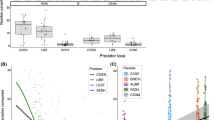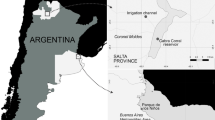Abstract
The potential for local biodiversity to ‘dilute’ infection risk has been shown to be particularly important in aquatic trematodes, where non-host organisms can feed on free-living infective stages (cercariae) and reduce transmission rates to target hosts. Non-host organisms could also impact transmission during other stages of the trematode life cycle. In Philophthalmus spp., cercariae encyst as metacercariae on external surfaces, where they remain exposed to the adverse effects of non-host organisms. In laboratory experiments, we tested the potential for a range of non-host organisms to (i) prey on cercariae, (ii) induce early (i.e., faster) encystment and (iii) prey on or destroy metacercariae. Our results show that intertidal anemones, and to a lesser extent clams, can consume substantial numbers of cercariae. However, we found no strong evidence that the presence of these predators causes cercariae to encyst faster as a way to escape from predation. We also found that grazing snails can reduce numbers of encysted metacercariae, either by eating or crushing them. Our findings add to the growing evidence that trematode transmission success can be strongly affected by the local diversity of non-host organisms. They also reinforce the notion that parasites are potentially important food items for many organisms, thus playing roles other than consumers in many food webs.



Similar content being viewed by others
References
Galaktionov KV, Dobrovolskij AA (2003) The biology and evolution of trematodes. Kluwer Academic Publishers, Dordrecht
Guilloteau P, Poulin R, MacLeod CD (2016) Impacts of ocean acidification on multiplication and caste organisation of parasitic trematodes in their gastropod host. Mar Biol 163:96
Hopper JV, Poulin R, Thieltges DW (2008) Buffering role of the intertidal anemone Anthopleura aureoradiata in cercarial transmission from snails to crab. J Exp Mar Biol Ecol 367:153–156
Johnson PTJ, Dobson A, Lafferty KD, Marcogliese DJ, Memmott J, Orlofske SA, Poulin R, Thieltges DW (2010) When parasites become prey: ecological and epidemiological significance of eating parasites. Trends Ecol Evol 25:362–371
Johnson PTJ, Ostfeld RS, Keesing F (2015) Frontiers in research on biodiversity and disease. Ecol Lett 18:1119–1133
Jones MB, Marsden ID (2005) Life in the estuary: illustrated guide and ecology. Canterbury University Press, Christchurch
Kaplan AT, Rebhal S, Lafferty KD, Kuris AM (2009) Small estuarine fishes feed on large trematode cercariae: lab and field investigations. J Parasitol 95:477–480
Keesing F, Holt RD, Ostfeld RS (2006) Effects of species diversity on disease risk. Ecol Lett 9:485–498
Keesing F, Belden LK, Daszak P, Dobson A, Harvell CD, Holt RD, Hudson P, Jolles A, Jones KE, Mitchell CE, Myers SS, Bogich T, Ostfeld RS (2010) Impacts of biodiversity on the emergence and transmission of infectious diseases. Nature 468:647–652
Latham ADM, Fredensborg BL, McFarland LH, Poulin R (2003) A gastropod scavenger serving as paratenic host for larval helminth communities in shore crabs. J Parasitol 89:862–864
Lei F, Poulin R (2011) Effects of salinity on multiplication and transmission of an intertidal trematode parasite. Mar Biol 158:995–1003
Martorelli SR, Fredensborg BL, Leung TLF, Poulin R (2008) Four trematode cercariae from the New Zealand intertidal snail Zeacumantus subcarinatus (Batillariidae). New Zealand J Zool 35:73–84
Mironova E, Gopko M, Pasternak A, Mikheev V, Taskinen J (2018) Trematode cercariae as prey for zooplankton: effect on fitness traits of predators. Parasitology. https://doi.org/10.1017/S0031182018000963
Mouritsen KN, Poulin R (2003) The mud flat anemone–cockle association: mutualism in the intertidal zone? Oecologia 135:131–137
Mouritsen KN, McKechnie S, Meenken E, Toynbee JL, Poulin R (2003) Spatial heterogeneity in parasite loads in the New Zealand cockle: the importance of host condition and density. J Mar Biol Assoc UK 83:307–310
Nakagawa S, Schielzeth H (2013) A general and simple method for obtaining R 2 from generalized linear mixed-effects models. Methods Ecol Evol 4:133–142
Neal AT, Poulin R (2012) Substratum preference of Philophthalmus sp. cercariae for cyst formation under natural and experimental conditions. J Parasitol 98:293–298
O’Dwyer K, Poulin R (2015) Taken to the limit: is desiccation stress causing precocious encystment of trematode parasites in snails? Parasitol Int 64:632–637
Orlofske SA, Jadin RC, Johnson PTJ (2015) It’s a predator-eat-parasite world: how characteristics of predator, parasite and environment affect consumption. Oecologia 178:537–547
Ostfeld RS, Keesing F (2000) The function of biodiversity in the ecology of vector-borne zoonotic diseases. Can J Zool 78:2061–2078
Pietrock M, Marcogliese D (2003) Free-living endohelminth stages: at the mercy of environmental conditions. Trends Parasitol 19:293–299
Prinz K, Kelly TC, O’Riordan RM, Culloty SC (2009) Non-host organisms affect transmission processes in two common trematode parasites of rocky shores. Mar Biol 156:2303–2311
Randolph SE, Dobson ADM (2012) Pangloss revisited: a critique of the dilution effect and the biodiversity-buffers-disease paradigm. Parasitology 139:847–863
Salkeld DJ, Padgett KA, Jones JH (2013) A meta-analysis suggesting that the relationship between biodiversity and risk of zoonotic pathogen transmission is idiosyncratic. Ecol Lett 16:679–686
Thieltges DW, Bordalo MD, Caballero-Hernandez A, Prinz K, Jensen KT (2008a) Ambient fauna impairs parasite transmission in a marine parasite-host system. Parasitology 135:1111–1116
Thieltges DW, Jensen KT, Poulin R (2008b) The role of biotic factors in the transmission of free-living endohelminth stages. Parasitology 135:407–426
Thieltges DW, Amundsen P-A, Hechinger RF, Johnson PTJ, Lafferty KD, Mouritsen KN, Preston DL, Reise K, Zander CD, Poulin R (2013) Parasites as prey in aquatic food webs: implications for predator infection and parasite transmission. Oikos 122:1473–1482
Welsh JE, van der Meer J, Brussaard CPD, Thieltges DW (2014) Inventory of organisms interfering with transmission of a marine trematode. J Mar Biol Assoc UK 94:697–702
Welsh JE, Liddell C, van der Meer J, Thieltges DW (2017) Parasites as prey: the effect of cercarial density and alternative prey on consumption of cercariae by four non-host species. Parasitology 144:1775–1782
Wood CL, Lafferty KD (2013) Biodiversity and disease: a synthesis of ecological perspectives on Lyme disease transmission. Trends Ecol Evol 28:239–247
Funding
CS was supported financially by a postdoctoral fellowship from the German Research Foundation (DFG, SE 2728/1-1).
Author information
Authors and Affiliations
Corresponding author
Ethics declarations
Conflict of interest
The authors declare that they have no conflict of interest.
Electronic supplementary material
Rights and permissions
About this article
Cite this article
Vielma, S., Lagrue, C., Poulin, R. et al. Non-host organisms impact transmission at two different life stages in a marine parasite. Parasitol Res 118, 111–117 (2019). https://doi.org/10.1007/s00436-018-6121-2
Received:
Accepted:
Published:
Issue Date:
DOI: https://doi.org/10.1007/s00436-018-6121-2




